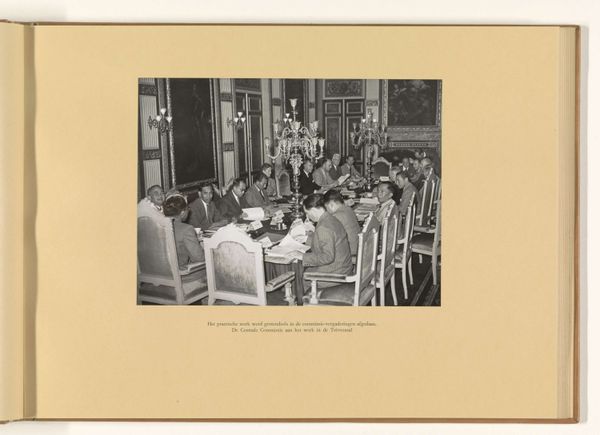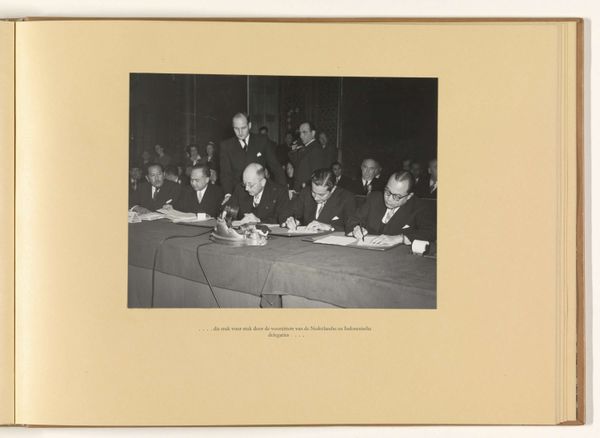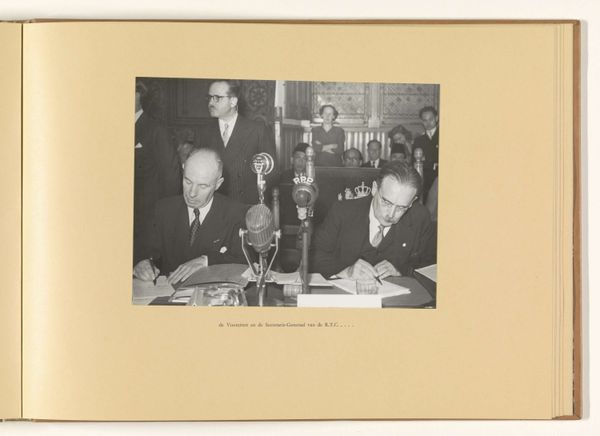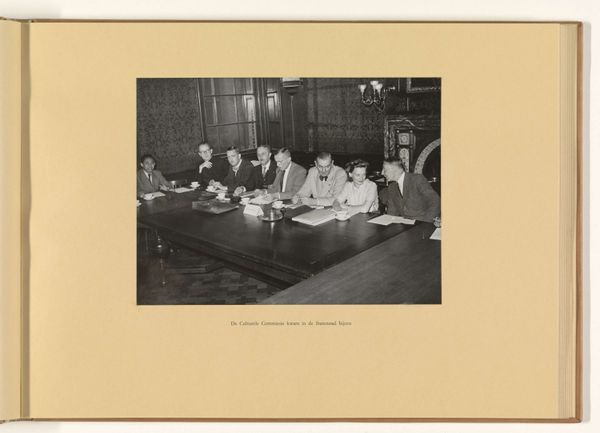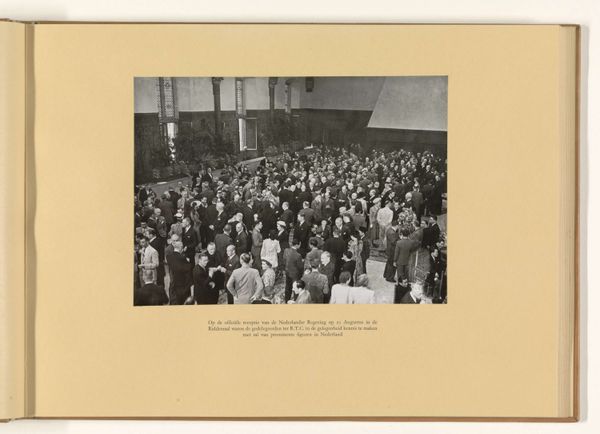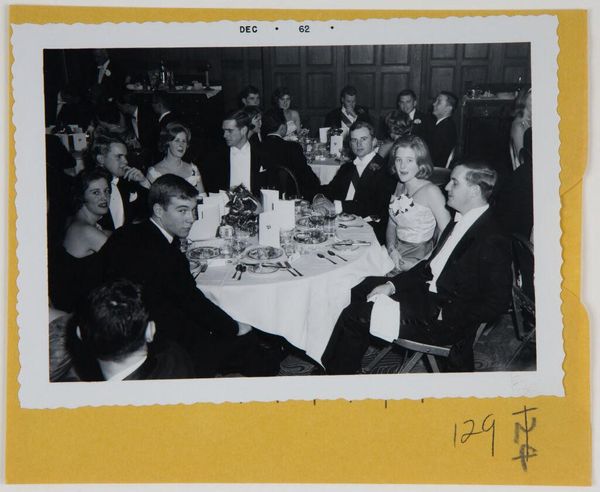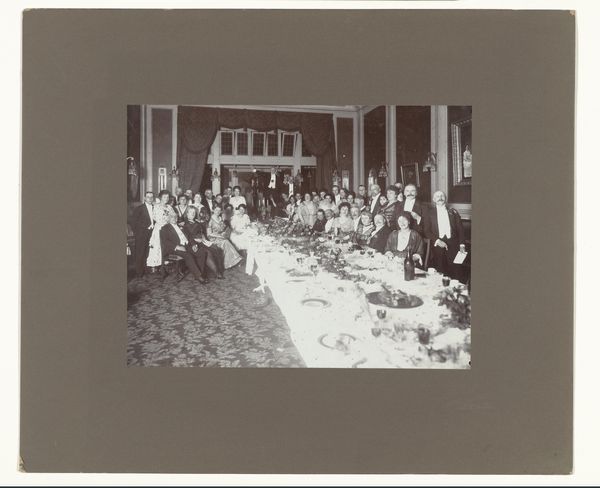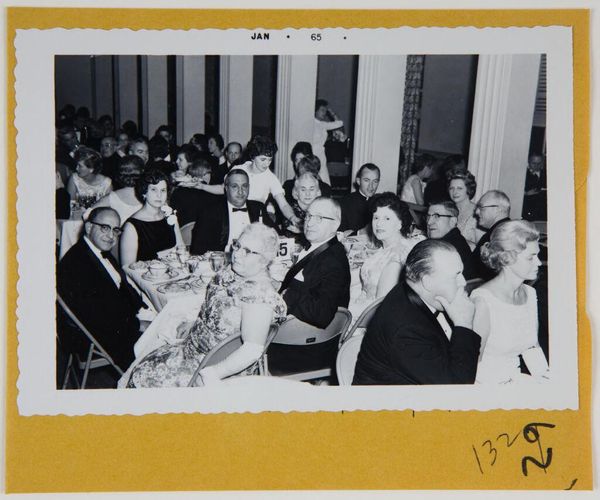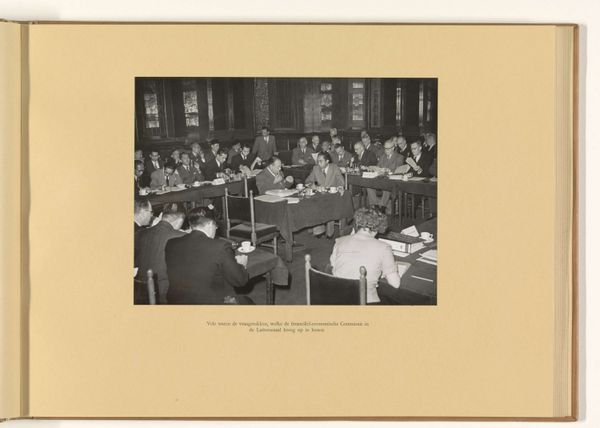
Een gezellige Brabantsche koffietafel wachtte de Indonesische gasten na een bezoek aan de Philipsfabrieken te Eindhoven Possibly 1949
0:00
0:00
regeringsvoorlichtingsdienst
Rijksmuseum
photography
#
photography
#
photojournalism
#
group-portraits
#
realism
Dimensions: height 170 mm, width 227 mm, height 292 mm, width 400 mm
Copyright: Rijks Museum: Open Domain
Curator: This photograph, possibly from 1949, titled "Een gezellige Brabantsche koffietafel wachtte de Indonesische gasten na een bezoek aan de Philipsfabrieken te Eindhoven", captured by the Regeringsvoorlichtingsdienst, presents a very formal coffee table spread. It resides at the Rijksmuseum. What strikes you upon seeing it? Editor: The overwhelming homogeneity. Everyone around that table appears to be a white man in a suit. The photograph emits a feeling of stark formality coupled with, dare I say, exclusion. It begs the question of who *isn't* invited to this cozy Brabant coffee break. Curator: Exactly. The photograph acts as a document of power. We need to look critically at the post-colonial context here, at this so-called 'invitation' extended by a Dutch corporation to Indonesian guests not long after Indonesian independence had been declared, yet remained contested by the Netherlands. Editor: It's unsettling, seeing this seemingly benign gathering now reframed within that historical lens. Knowing the reality of Dutch-Indonesian relations at that time, the staging of this photograph feels...calculated. Curator: Consider the "coziness" signaled by the title: "A cozy Brabant coffee table." This, coupled with a scene of cordiality, suggests an attempt to sanitize a complex political relationship. It subtly obscures power dynamics inherent between the former colonizer and the newly independent nation. This wasn't just coffee; it was a performance. Editor: And the performance is impeccably staged. Look at the labor evident in the perfectly laid tablecloth, the abundant pastries... all likely presented by unseen female servers, as we can see a lady. It reinforces traditional gender roles within this theater of diplomacy, and, of course, nobody brown around the table. Curator: I agree, gender and race intersect to uphold established hierarchies. While this is categorized as "photojournalism", we must consider the agenda behind its production. It wasn’t simply capturing reality but shaping a specific narrative for public consumption, intended as state PR. Editor: Right. Thinking about the history behind this photograph completely changes its significance for me. It’s no longer just a snapshot; it’s a meticulously constructed image perpetuating a specific ideology. Curator: Precisely. By acknowledging these deeper contexts, we can challenge the intended message and recognize the complex socio-political narratives at play. Editor: Absolutely, and acknowledging this as more than 'just art', rather seeing it as historical rhetoric captured in visual form allows a potent reevaluation.
Comments
No comments
Be the first to comment and join the conversation on the ultimate creative platform.
